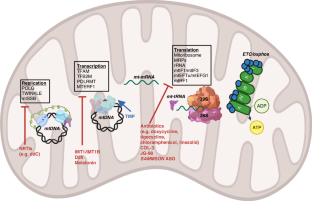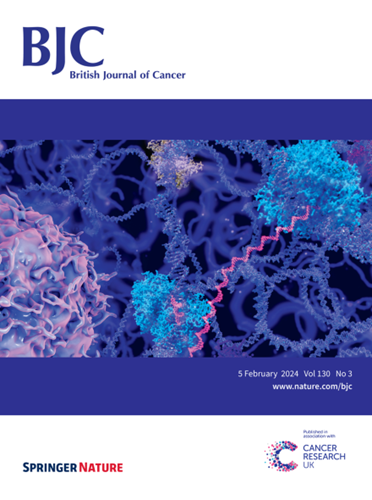癌症中线粒体基因表达的失调:机制和治疗机会。
IF 6.4
1区 医学
Q1 ONCOLOGY
引用次数: 0
摘要
2011 年,Hanahan 和 Weinberg 首次将 "能量代谢重编程 "视为癌症的一个新特征,现在又将其视为癌症的一个核心特征。线粒体是新陈代谢的枢纽,对能量功能和细胞平衡至关重要。线粒体起源于细菌,并保存着自己的基因组,其中编码着对其功能至关重要的蛋白质和 RNA,这使线粒体成为独一无二的细胞器。线粒体基因产品的成功生成需要线粒体 "中央原理 "的协调运作,包括 mtDNA 生成线粒体蛋白质所需的所有步骤。这些过程中的每一个都有多个层次的调节,包括通过 mtDNA 包装和表观遗传修饰实现的 mtDNA 可及性和保护、通过线粒体复制实现的 mtDNA 拷贝数、通过线粒体转录因子实现的线粒体转录,以及通过线粒体核糖体的形成实现的线粒体翻译。这些线粒体过程在癌症中的失调最近才得到重视,大多数研究都是相关性的。尽管如此,线粒体中心理论与促肿瘤表型之间的许多重要关联已被记录在案。一些研究甚至提供了机理方面的见解,并进一步证明了成功的药物靶向策略。线粒体对癌症生物学和治疗学的重要性日益突出,因此,我们越来越有必要了解其基本机制,以便成功地对其进行靶向治疗。我们希望通过对这一机制的了解,开发出线粒体靶向方法,在抗癌效力和正常细胞毒性之间取得平衡。本综述将重点介绍癌症线粒体基因表达失调的现有证据,以及即将出现的治疗机会。本文章由计算机程序翻译,如有差异,请以英文原文为准。


Deregulation of mitochondrial gene expression in cancer: mechanisms and therapeutic opportunities
“Reprogramming of energy metabolism” was first considered an emerging hallmark of cancer in 2011 by Hanahan & Weinberg and is now considered a core hallmark of cancer. Mitochondria are the hubs of metabolism, crucial for energetic functions and cellular homeostasis. The mitochondrion’s bacterial origin and preservation of their own genome, which encodes proteins and RNAs essential to their function, make them unique organelles. Successful generation of mitochondrial gene products requires coordinated functioning of the mitochondrial ‘central dogma,’ encompassing all steps necessary for mtDNA to yield mitochondrial proteins. Each of these processes has several levels of regulation, including mtDNA accessibility and protection through mtDNA packaging and epigenetic modifications, mtDNA copy number through mitochondrial replication, mitochondrial transcription through mitochondrial transcription factors, and mitochondrial translation through mitoribosome formation. Deregulation of these mitochondrial processes in the context of cancers has only recently been appreciated, with most studies being correlative in nature. Nonetheless, numerous significant associations of the mitochondrial central dogma with pro-tumor phenotypes have been documented. Several studies have even provided mechanistic insights and further demonstrated successful pharmacologic targeting strategies. Based on the emergent importance of mitochondria for cancer biology and therapeutics, it is becoming increasingly important that we gain an understanding of the underpinning mechanisms so they can be successfully therapeutically targeted. It is expected that this mechanistic understanding will result in mitochondria-targeting approaches that balance anticancer potency with normal cell toxicity. This review will focus on current evidence for the dysregulation of mitochondrial gene expression in cancers, as well as therapeutic opportunities on the horizon.
求助全文
通过发布文献求助,成功后即可免费获取论文全文。
去求助
来源期刊

British Journal of Cancer
医学-肿瘤学
CiteScore
15.10
自引率
1.10%
发文量
383
审稿时长
6 months
期刊介绍:
The British Journal of Cancer is one of the most-cited general cancer journals, publishing significant advances in translational and clinical cancer research.It also publishes high-quality reviews and thought-provoking comment on all aspects of cancer prevention,diagnosis and treatment.
 求助内容:
求助内容: 应助结果提醒方式:
应助结果提醒方式:


